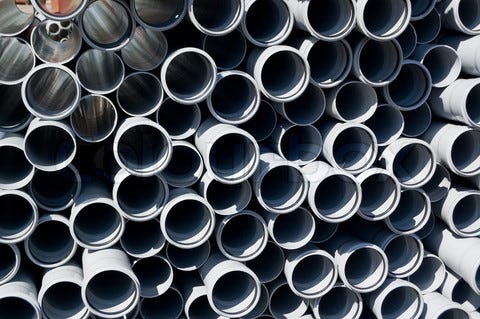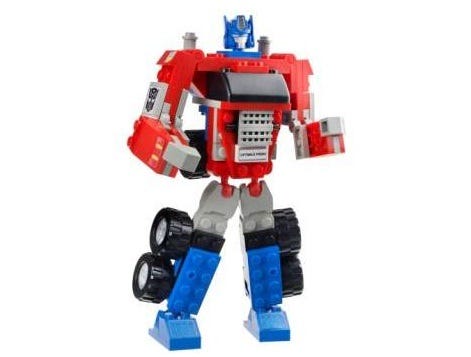Analyst talks PVC global demand, discusses packaging sector
Global demand for polyvinyl chloride (PVC) has seen a steady increase over the last decade, according to GBI Research, a market research firm.In 2011, global PVC demand was at 32.3 million tons. The majority of this demand was accounted for by Asia-Pacific, with 61.5%, followed by Europe and North America with 16.7% and 14.2% of demand, respectively. The remaining shares of 5.9% and 1.7% were held by South and Central America and the Middle East and Africa.
August 23, 2012
Global demand for polyvinyl chloride (PVC) has seen a steady increase over the last decade, according to GBI Research, a market research firm.
In 2011, global PVC demand was at 32.3 million tons. The majority of this demand was accounted for by Asia-Pacific, with 61.5%, followed by Europe and North America with 16.7% and 14.2% of demand, respectively. The remaining shares of 5.9% and 1.7% were held by South and Central America and the Middle East and Africa.
 The demand for PVC in the Asia-Pacific region was due to the high growth from the construction, packaging, agriculture and electrical end-use sectors, the report stated.
The demand for PVC in the Asia-Pacific region was due to the high growth from the construction, packaging, agriculture and electrical end-use sectors, the report stated.
"The trend was not so surprising," GBI Research analyst Brijesh Ramani told PlasticsToday. "Asia-Pacific region, or rather China, has been the global PVC demand and production leader for quite some time. And a similar trend is expected to continue in future."
In 2011, the leading end-use segments were construction (17 million tons), packaging (3.7 million tons), and electrical (2.7 million tons). Together, they accounted for around 75% of global PVC demand.
The automotive, agriculture, footwear and other end-use sectors accounted for the remainder of global end-use demand for PVC in 2011. A similar trend for end-uses of PVC is expected to continue throughout the forecast period to 2020.
Closer look at PVC in packaging
Commonly found in clamshell and blister packages, PVC had been a widely used packaging material across much of the consumer goods industry for many years.
However, in recent years PVC has also been the source of recurring controversy. The typical PVC compound is loaded with chemical additives, which can include heavy metals and potential endocrine disruptors.
Companies such as Unilever and Toy giant Hasbro have announced plans to phase out PVC in its packaging. P&G said PVC currently represents less than 1.5% of the company's total use of its plastic packaging materials.
PVC currently represents less than 1.5% of the company's total use of its plastic packaging materials.
Ramani said there have been some concerns regarding the usage of PVC in the toys and the packaging market. Several countries have also formed new stricter laws and legislations against the use of PVC in children's toys, which has resulted in reduced the PVC consumption from the toy manufacturing sector.
Substitution by polyethylene and other polyolefin's in cable and wire (electrical) applications and certain uses in the construction sector also affected the growth of PVC consumption, Ramani said.
"Also, in the recent years the consumption of PVC in food packaging has also declined," he said. "But that is because of better cost-performance of other polymers compared to PVC."
Ramani said the developing regions, Asia-Pacific, South and Central America and Eastern Europe, are seeing the highest growth from the construction and other key PVC end-use segments, which will continue to drive the global PVC consumption. Also, the environmental regulations are still less strict than the developed regions, which would also aid the growth of PVC market in these regions, he said.
Europe leads PVC recycling campaign
Europe has a continued focus on PVC sustainability, Ramani said. The EU's Vinyl 2010 program, with a main objective of using voluntary commitment by various member countries and companies to enhance sustainable production and use of PVC, was a major success, he said. In 2010, around 261,000 tons of used PVC was recycled, exceeding the 10-year target of 200,000 tons.
Based on the success of the Vinyl 2010 program, the EU has launched the Vinyl Plus program, which is expected to further encourage PVC sustainability regionally. The new target under this program is to recycle 800,000 tons of PVC by 2020. Therefore, demand for new PVC resin would decrease if the focus on recycling PVC increases, Ramani said.
"The target volume of PVC to be recycled is really very high and would contribute to around one-tenth of the PVC consumed in 2020," he said. "Although it is bound to have some impact but overall consumption volume will continue to increase, which will not hamper the local PVC production significantly."
Various efforts are being made by different agencies to promote the sustainability and recycling of PVC.
For example, the British Plastics Federation (BPF) developed a brochure titled 'PVC in Sport' that highlighted the efforts by the Olympic delivery authority regarding the usage of PVC in the London Olympics. The BPF asked all PVC products suppliers to make sure that they were complying with the standards of the ECVM charter and also to take up some sort of take-back scheme for recycling.
"So, we can say that people are being made aware and the various stakeholders involved are indeed trying to take as many steps possible to promote the sustainability and recycling of PVC," Ramani said. "PVC would continue to have a healthy demand from the European region in future. But how much of the PVC consumed would be the recycled one, depends upon the efforts of the various stakeholders."
About the Author(s)
You May Also Like


